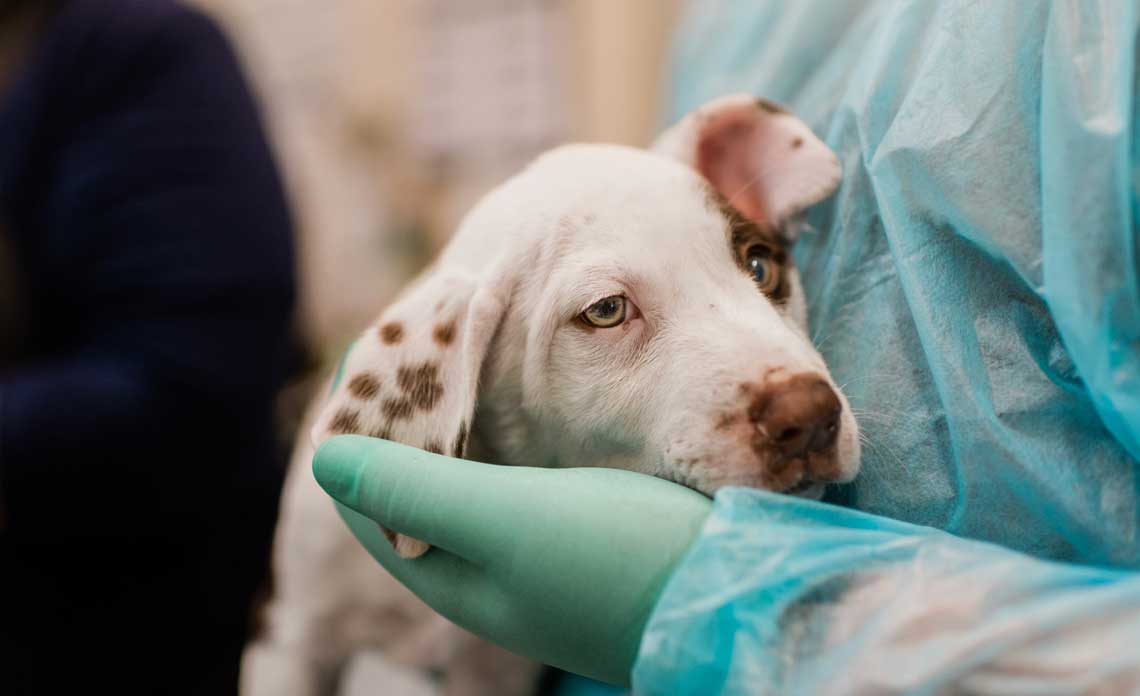Canine influenza seems to be on the rise, with more dogs across the country contracting the virus as of late. But what is canine influenza, and how can you keep your pets healthy? Here is what you need to know.
What is canine influenza and how is it transmitted?
Canine influenza, sometimes referred to as dog flu, is a highly contagious viral infection that dogs, and occasionally cats, can contract via respiratory droplets like saliva. The virus attacks cells in the pets’ respiratory tract. Infected dogs can transfer the virus by barking, coughing and sneezing, according to a report by the Center for Disease Control.
Dogs can also contract canine influenza via food and water bowls, toys, collars, leashes and anything else an infected dog could get saliva or mucus on. According to the American Veterinary Medical Association, the virus can live on surfaces for up to 48 hours, on clothing for up to 24 hours and on hands for up to 12 hours. Dogs that frequent places like dog parks, groomers and doggy daycares, or live in animal shelters are at an increased risk for exposure.
Because this virus is so easily contractable, it is critical to regularly disinfect surfaces, wash hands and clean clothes, especially if already exposed.
How do I know if my pet has contracted canine influenza?
If you suspect your pet is sick or could have contracted canine influenza, consult your veterinarian for testing. Your dog cannot be diagnosed without clinical testing.
A canine influenza positive dog can exhibit a number of signs and symptoms, the most common of which are coughs and runny noses. They might also experience fever, lethargy, eye discharge and lack of appetite, according to the CDC. While these signs are common, it is possible your dog could have the infection without exhibiting any side effects.
How do veterinarians treat canine influenza?
According to the AVMA, around 80% of dogs that come in contact with the viral infection will contract it.
Luckily, canine influenza can be treated by veterinarians, who may choose to prescribe or recommend antibiotics, non-steroidal anti-inflammatory medications and/or an increase in fluid intake.
It is important to take your pet to a veterinarian as soon as you suspect they have come in contact with the virus or show signs. Most dogs recover within 2-3 weeks. However, if left untreated, the virus can evolve into pneumonia, which is considered a severe illness, according to the CDC.
Can my pet give me canine influenza?
Your pet cannot give you canine influenza. The virus can only infect dogs and cats, however, should you come in contact with an infected pet there is a risk that you could transmit it via your clothing or hands.
How can I protect my pet from canine influenza?
There are several ways you can help prevent your pet from contracting this viral infection. Your pet can receive a canine influenza vaccine from a veterinary or animal clinic. It is often recommended that dogs who frequent places with high pet traffic (boarding facilities, dog parks, grooming, etc.) receive the vaccine as a precaution.
Practicing good sanitary habits and regularly cleaning your dogs’ belongings is critical to ensure their health and safety.
To prevent the spread of the virus to other pets, the AVMA recommends isolating infected pets, along with all other household pets, for four weeks.
Stay up to date
Subscribe to emails from Operation Kindness.
Follow us on Facebook, Instagram and Twitter for the latest news.





